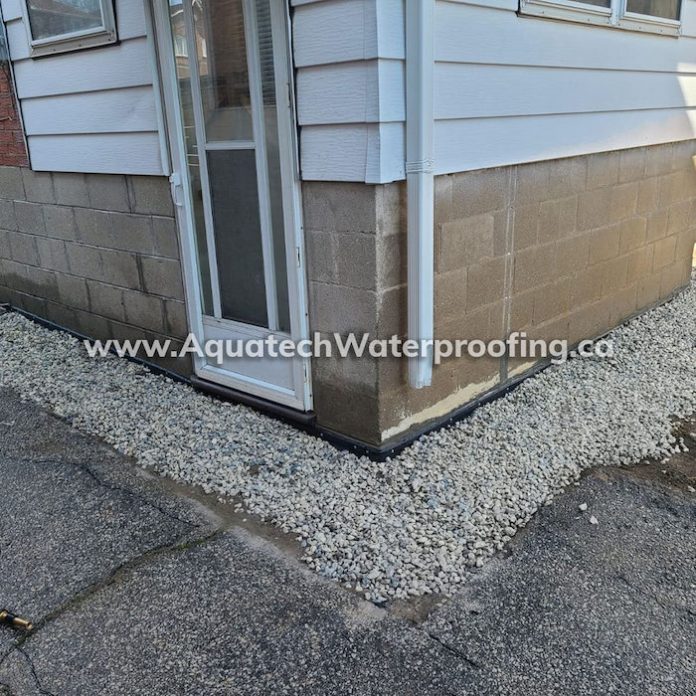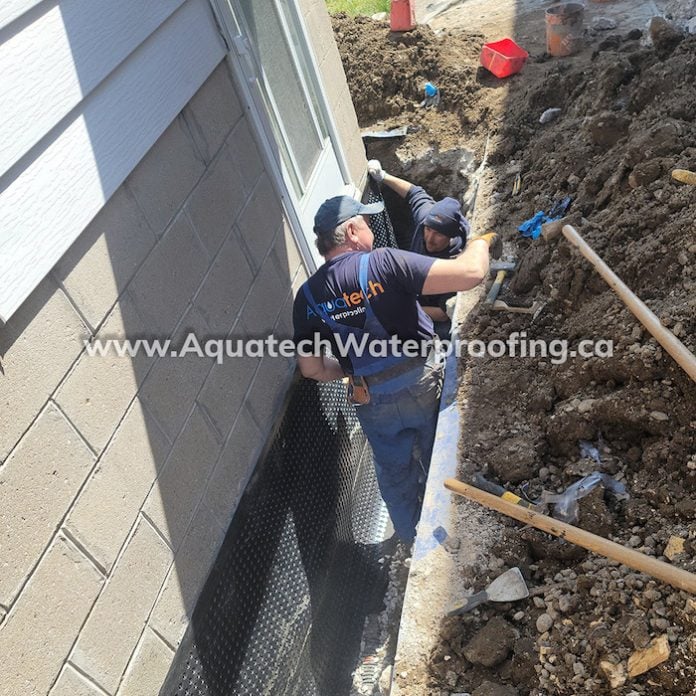How To Stop Water From Seeping Through Basement Walls
With the rainy season, many homeowners are concerned about weakened walls and how to stop wet walls. Water seeps through the building’s exteriors during the rainy season, causing damp spots on the interior walls. It causes peeling paint, leaks, mould, and fungi and makes your home feel cold and musty. These conditions sometimes persist even after the rainy season has ended. Long-term exposure to moisture can cause significant harm to your walls and your home’s framework, so it’s essential to understand the importance quickly. Use the solutions below to learn how to stop water from seeping through basement walls.
-
Restore the crown:
If the gutters are working and obvious holes are being filled, but water still drips into your basement or crawl space from high on foundation walls, surface water isn’t draining away from the house as it should. Your home should build on a “crown” of soil that slopes at least 6 inches in all directions for the first 10 feet. The ground around the base settles over time. With a shovel and some soil, you can rebuild it.
-
Restructure the Landscape:
Building up the crown could bring soil—and mould and termites—too close to siding for comfort: Because your home’s siding slightly overlaps its base, building up the crown could bring soil—and rot and termites—too close to siding for comfort: The minimum safe distance is 6 inches. Build a berm (a mound of dirt) or a swale (a large, shallow ditch) to prevent flooding long before it reaches your house in this situation.
Berms are easy to build in small areas; a landscape contractor will construct one for a few hundred dollars. Berms are less proper on more extensive projects because they need too much soil to truck in. Dig a swale in that situation. Berms and swales can be attractive features in your yard after the landscaping has filled in.
-
Fill in the Gaps:
Waterproof the basement wall from the inside; if water is dripping, you can use hydraulic cement or polyurethane caulk to seal the gaps into the basement through cracks or holes around plumbing pipes. If the issue is simply a hole from which water oozes, including surface runoff or wet soil, plugs operate. The problem is groundwater if the water is coming up through the floor and at the joint where the floor and walls meet, and plugs will not solve the problem.
-
Install Gutter Extensions:
Fix a leaking wall from rainwater by dumping water less than 5 feet from your home, install plastic or metal gutter extensions to guide the water further out.
On the other hand, extensions aren’t the most appealing or practical long-term solution, particularly if you’re prone to tripping over them or running over them with a lawnmower. The permanent underground drain pipe is unseen and can transport vast amounts of gutter runoff far away from home.
-
Fix Footing Drains:
Hydrostatic pressure forces water up from the bottom, causing water to leak into your basement low on the walls or even at the gaps where walls touch the floor. First, see if you have footing drains, which are underground pipes that take water away from the base and install when the house was constructed. (Look for a cleanout pipe capped a few inches above the floor or a utility hole or drain in the basement floor.) If the drains are blocked up, open the cleanout and use a garden hose to clean the pipes.
-
Waterproof the Walls:
Installing an interior drainage system removes the water but does not make the walls waterproof. You’ll need an external system that includes a French drain to reduce hydrostatic pressure and exterior waterproofing to protect the base.
It’s a big job that involves excavating around the building, but if you have a base with multiple holes, it may be the best option. It also keeps the mess and water out of the finished basement, which could be the best option if you don’t want to rip it up.
Conclusion:
If you have a wet basement after rain or snowmelt, make sure water is diverted away from your foundation. The soil alongside your house is likely to settle over time, creating a moat that collects runoff and directs it down your foundation wall and into the basement. The soil along the base and lawn edging will escalate the problem.
Thank you for reading How To Stop Water From Seeping Through Basement Walls







